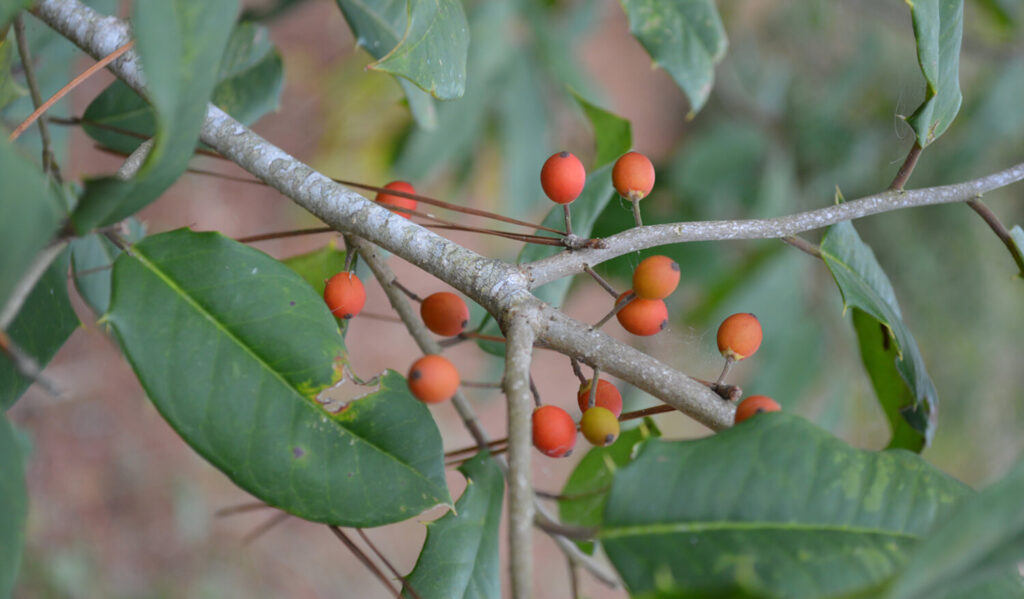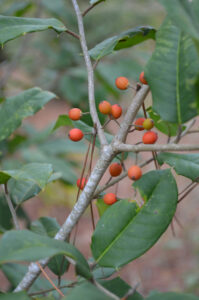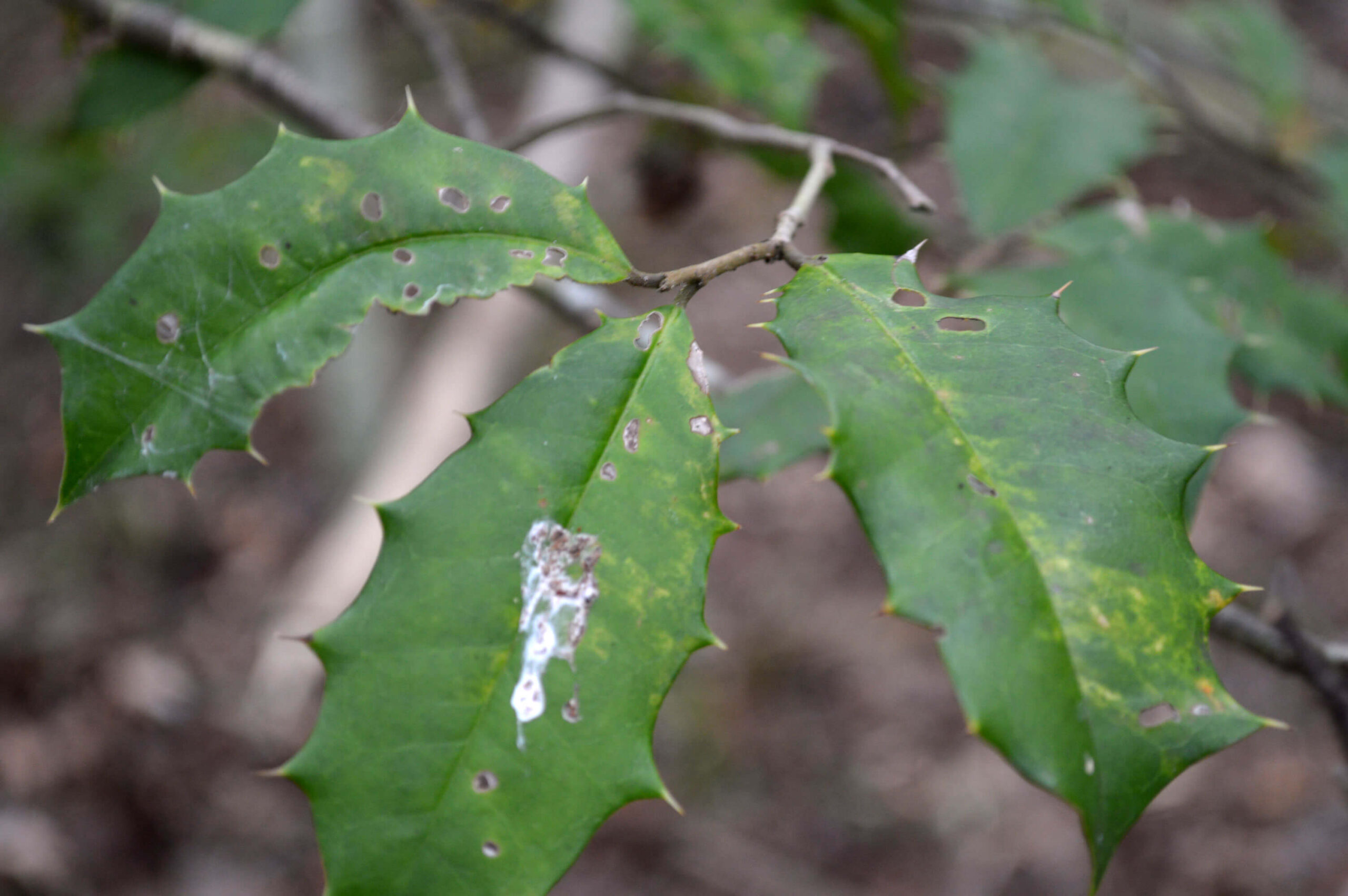If you want to add some color to your winter garden and provide food and shelter for songbirds and other wildlife simultaneously, American Holly (Ilex opaca) is a good choice.

The berries form in October and persist throughout the winter when many other food sources are gone. Its leaves are evergreen and form a dense canopy.
The bright red berries are a nice, colorful addition to the winter landscape and make wonderful holiday decorations. This is a good shrub to use if you want a nicely shaped hedge.
The leaves are thick and waxy and have very prickly spines. You can trim the shrub into the desired shape or leave it to grow in the standard pyramid form.
Wildlife that use the American holly
This evergreen shrub is found throughout the eastern and southern United States from Texas to Connecticut. It’s an important winter food source for many birds and animals and also provides cover and nesting sites for many birds when other trees and shrubs are bare. Some of the animals and birds that feed on the berries and use the shrub for cover include:
- Cedar waxwings
- Woodpeckers
- American robins
- Thrushes
- Mourning doves
- Northern bobwhite
- Northern cardinals
- Catbirds
- Mockingbirds
- Squirrels
- Raccoons
- White-tailed deer
- Turkey
- Chipmunks
- Voles
- Mice
- Turtles
- Fox
Pollinators like bees and wasps are attracted to the flowers. This shrub is deer-resistant.
About American Holly
This shrub has separate male and female plants, so be sure to plant both sexes if you want to produce berries. Typical planting ratios are 1:3 male to female. There are a lot of cultivars, so you can find one that works for your garden.
Height, Width, and Shape
American holly can get as tall as 50 feet, but it is normally between 15 to 30 feet in height with a width of 15-25 feet. The normal shape of this shrub is typically pyramid-shaped, but this will be affected by how much shade and wind it is exposed to.
Hardiness
It is hardy in zones 5b through 9.
Growth rate
Slow
Soils
American holly can tolerate a wide range of soils – sand, loam, clay, acidic, slightly alkaline, well-drained, or moist. It grows best in well-drained, sandy soil. The type of soil this shrub grows in will affect the height of the plant.
Light conditions
It can grow in full sun to shade, but performs best in part shade with some full sun during the day.
Water requirements
Additional Resources
- http://plants.usda.gov/factsheet/pdf/fs_ilop.pdf
- http://www.fcps.edu/islandcreekes/ecology/american_holly.htm
- http://www.hort.uconn.edu/plants/i/ileopa/ileopa1.html
- http://www.na.fs.fed.us/pubs/silvics_manual/volume_2/ilex/opaca.htm
- http://www.nature.org/ourinitiatives/regions/northamerica/unitedstates/massachusetts/explore/vhn-american-holly.pdf
- http://www.globalspecies.org/ntaxa/853555
Photos: http://www.forestryimages.org/browse/subimages.cfm?SUB=3293



